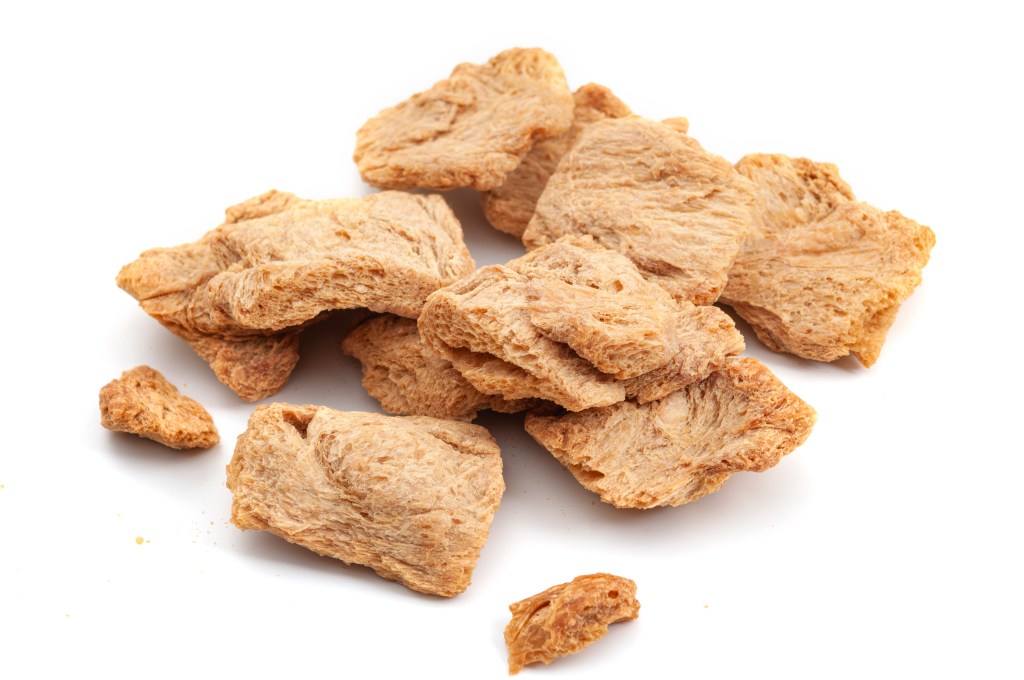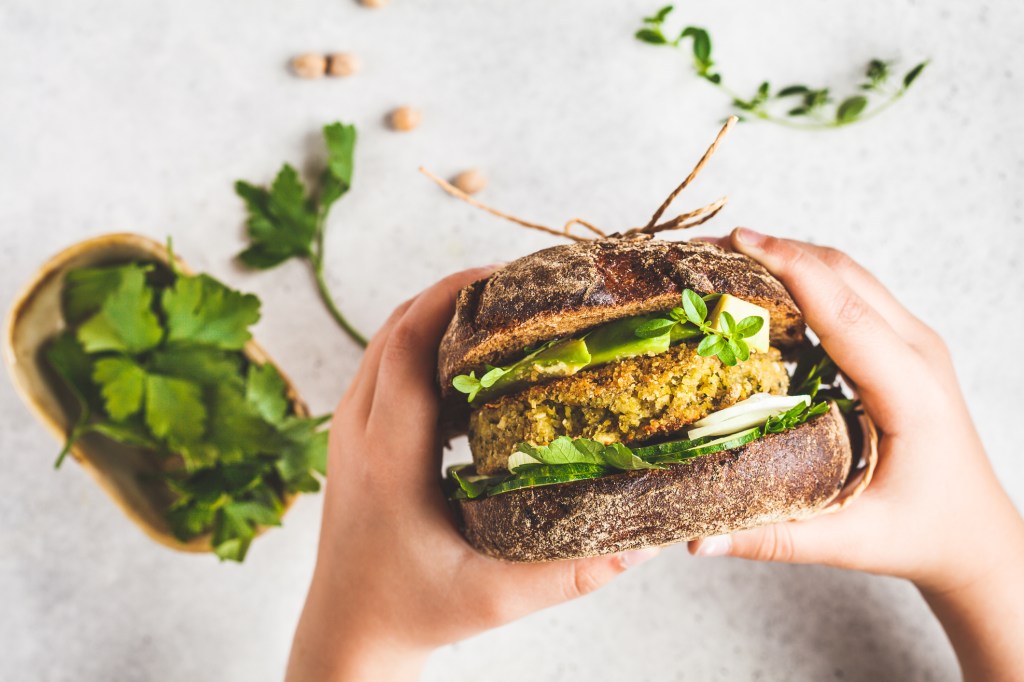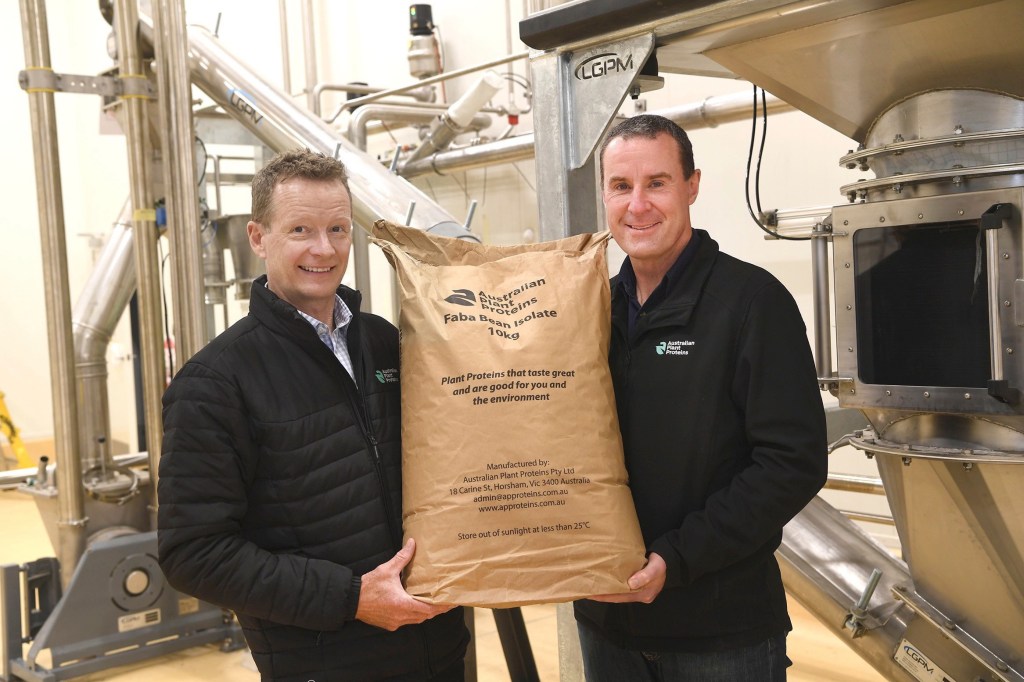While its sights are firmly set on the imminent opening of its first production facility in Western Sydney, Harvest B’s long term vision is a global one, with plans to transform the way plant-based manufacturers source protein ingredients.
Founded in mid-2020, Harvest B is the brainchild of Kristi Riordan, Alfred Lo and food manufacturing veteran, Werner Fuggersberger, who when exploring opportunities in the burgeoning plant-based industry, was frustrated that manufacturers don’t have access to local protein ingredients. For US-born Riordan, who has spent decades in FinTech and EdTech, this represented a massive missed opportunity.
“Australia has a commodity mindset; we export raw commodities without doing value-added production,” Riordan told Future Alternative. “So when I met Werner, he was really frustrated that he couldn’t access the ingredients to make plant-based analogues here in Australia. He couldn’t access what he felt like he should be able to access here, given the incredible rich history of agriculture in Australia.”

After doing a little digging, it became clear to Riordan that the opportunity wasn’t just in producing Australian grown and developed protein ingredients. Yes, supplying to the Australian market is a primary objective, but Harvest B wants to create an ingredient library, where food companies from all over the world can access a range of protein ingredients suited to their target market’s specific nutritional and flavour requirements.
It’s a flexibility that the incumbent protein ingredient, Textured Vegetable Protein (TVP), simply can’t offer. TVP is made from imported soy or pea, and is limited in terms of texture, performance, colour, aftertaste and nutrition when used to make meat analogues, so food manufacturers need to work hard to make it taste like the animal protein it’s trying to replicate. (According to Riordan, this is why many plant-based meat products have lengthy, difficult to decipher ingredients lists).

“Where this industry needs to transition to, is to think about [protein] as a product rather than a value-added opportunity for a crop. Harvest B is looking to be this house of proteins, considering every downstream need. For example, if you want a certain kind of texture, or a certain nutritional element or functional element, whether it’s colour or flavour, that can be achieved by blending together different plant proteins,” she said.
Building a library
Just under a year ago, Harvest B secured $6 million in VC and grant funding, with the investment funding the business’ pilot facility in the western Sydney suburb of Penrith, due to open in July, as well as R&D initiatives which have produced a library of 10 different protein ingredients. Some celebrate Australian crops exclusively – predominantly Australian wheat – while others are a blend of local and imported proteins.
“There’s a limited range of plants here that are both technologically and economically viable to be able to make into plant-based meats,” Riordan said.
She points me to Harvest B’s texturised ‘chicken’ protein prototype, comprising just two ingredients: Australian wheat and imported soy. With a little water and a quick fry in the pan, you have a first-of-a-kind wholefoods protein ingredient.

“It’s really great for the supply chain because it’s a dehydrated protein which means it’s shelf stable. We can ship it, you can keep it on-hand and use it when you need it.
“We’ve got a wide range of ingredients that are specifically designed for different formulations. So if you want your product to go into retort, we’re going to give you a different texture than if you’re going into fresh or chilled. If you want to offer a red meat experience, it’s going to be a different product than if you wanted to offer something like chicken,” Riordan said.
More than replacing meat
The taste and mouthfeel of animal protein changes based on where and how it’s prepared, and so while Harvest B is currently focusing on satisfying the palate of western markets, its library of tailor-made protein ingredients is sure to have global appeal.

“You wouldn’t really find TVPs that say ‘this is a product that you would use if you want to make a retort chicken in Asia.’ The texture that’s appropriate for Taiwan is different to the texture that’s appropriate for Japan, or America,” Riordan said.
“Someone said to me recently, ‘I’m so excited for you to start doing what you’re doing in India’, because it’s a predominantly vegetarian country, of course, but they’ve got major nutritional deficiencies. So we need to start thinking about this as a food technology … where we can create better processes to retain nutrition, or to integrate nutritional elements specific to the needs of a market.
“This category is about so much more than just replacing the meat. It’s about figuring out how we create food experiences that excite customers and give them the flavour profile, the taste, the mouthfeel and the nutritional experience that’s amazing for their market.”
Building the Australian industry
A key point of difference for Harvest B is its celebration of Australian provenance, filling a need in the market for locally sourced and produced protein. With so much of the local industry dominated by imported products, the recent announcement of a $378 million project to bolster South Australia’s plant protein production capability was validation to Riordan of both the need for and government support of the alternative protein industry.

Led by Australian Plant Proteins (APP), which operates Australia’s only commercial scale protein extraction facility, the project will see the development of three plant protein production facilities, quadrupling the state’s output to 25,000 tonnes per year.
Meat processor Thomas Foods International, and AGT Foods, a supplier of value-added pulses, are partners in the project, which attracted $113 million in federal funding and an additional $65 million from the South Australian government.
“It’s fantastic for so many reasons,” Riordan said. “It’s validation by the government that this is an industry that we need to invest in. We can’t let the Canadians, Americans, Europeans get out ahead of Australia because we’re one of the agricultural powerhouses in the world. So I think it’s exciting from that respect.”
Thomas Foods’ role in the project demonstrates that the protein industry – including both traditional and plant protein – will thrive off collaboration.
“Traditional meat manufacturers are realising they have a role in this as well. They are starting to think about themselves as more of a protein manufacturer …but everybody can’t do it all. They’re not in a position to do the kind of R&D work that we’re doing at a protein level … And at the same time, millers aren’t R&D houses, and we’re not farmers. The supply chain needs partnerships.
“So I think it was great, both from the perspective of setting an example of how partnerships can be established, and also having the government recognise that they need to pay attention to this category.”
To stay up-to-date on the latest industry headlines, sign up to Future Alternative’s enewsletter.
Posted on:


